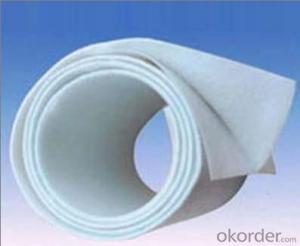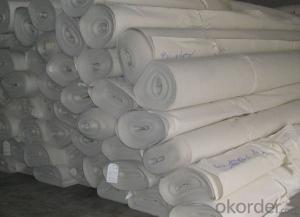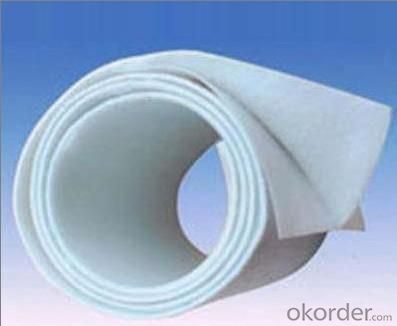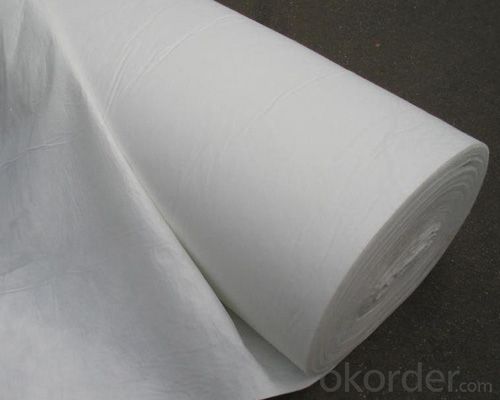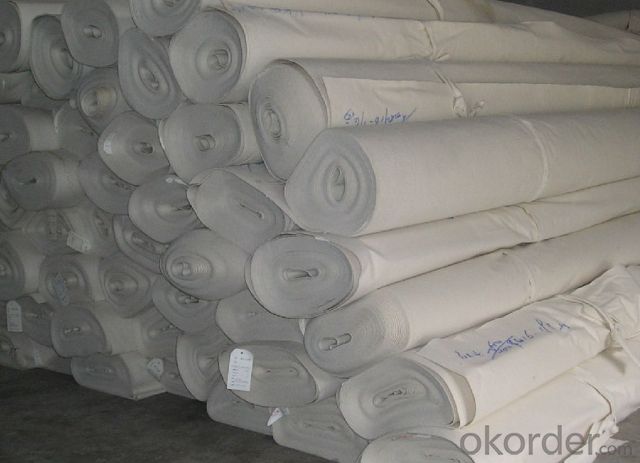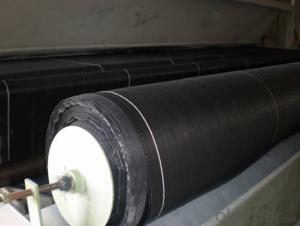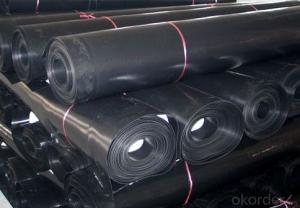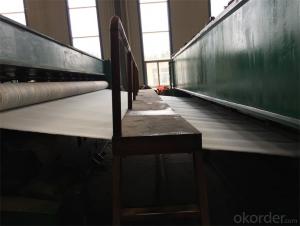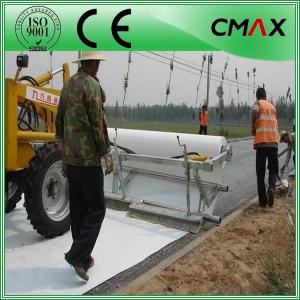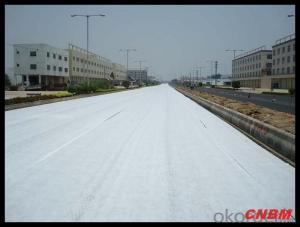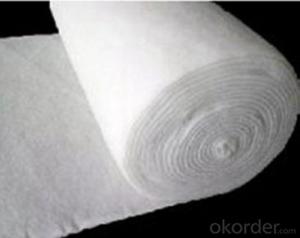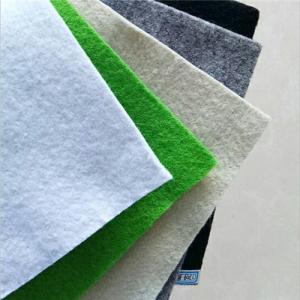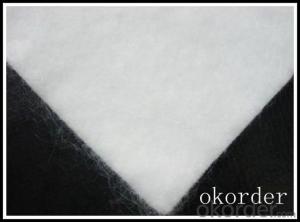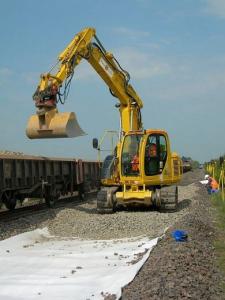Geotextile Woven Fabric Polypropylene Non-Woven Geotextile for Drainage Function
- Loading Port:
- Qingdao
- Payment Terms:
- TT OR LC
- Min Order Qty:
- 20000 m²
- Supply Capability:
- 1500000 m²/month
OKorder Service Pledge
OKorder Financial Service
You Might Also Like
Description of Polypropylene Non-woven Geotextile for Drainage Function:
Nonwoven geotextiles are multi-purpose fabrics that are felt-like in appearance. There are numerous practical applications for nonwoven geotextiles. Nonwoven drainage fabrics are an economical alternative to graded aggregate and sand filters and can eliminate many of the problems associated with using, purchasing and transporting aggregate
Features of Polypropylene Non-woven Geotextile for Drainage Function:
Can withstand the installation stresses
UV stabilized
High chemical resistance
Optimum elongation
Technical Parameters of Polypropylene Non-woven Geotextile for Drainage Function:
NO. | Item Value | Specification | Note | ||||||||||
100 g | 150g | 200g | 250 g | 300 g | 350 g | 400 g | 450 g | 500 g | 600 g | 800 g | |||
1 | Weight Variation% | -8 | -8 | -8 | -8 | -7 | -7 | -7 | -7 | -6 | -6 | -6 | |
2 | Thickness mm≥ | 0.9 | 1.3 | 1.7 | 2.1 | 2.4 | 2.7 | 3.0 | 3.3 | 3.6 | 4.1 | 5.0 | |
3 | Width Variation % | -0.5 | |||||||||||
4 | Breaking Strength KN/m ≥ | 2.5 | 4.5 | 6.5 | 8.0 | 9.5 | 11.0 | 12.5 | 14.0 | 16.0 | 19.0 | 25.0 | MD and TD |
5 | Elongation at Break % | 25~100 | |||||||||||
6 | CBR Mullen Burst Strength KN≥ | 0.3 | 0.6 | 0.9 | 1.2 | 1.5 | 1.8 | 2.1 | 2.4 | 2.7 | 3.2 | 4.0 | |
7 | Sieve Size O90 mm | 0.07~0.2 | |||||||||||
8 | Vertical Permeability | K× (10-1~10-3) | k=1.0-9.9 | ||||||||||
9 | Tear Strength KN≥ | 0.08 | 0.12 | 0.16 | 0.20 | 0.24 | 0.28 | 0.33 | 0.38 | 0.42 | 0.46 | 0.6 | MD |
FAQ:
What is the main application of Polypropylene Non-woven Geotextile for Drainage Function?
The main application of our Polypropylene Non-woven Geotextile for River Construction is as follows: The highway, railway, soil-stone dam, breakwater, airport, backfill soil of retaining wall, slope protection, etc.
Where is your main market?
Our main market is in Middle East, South America and some African countries.
What is your advantages for Polypropylene Non-woven Geotextile for Drainage Function?
One of the largest manufacturer of Polypropylene Non-woven Geotextile for River Construction for Construction with advanced equipment, big production capacity and excellent quality.
- Q: Can geotextiles be used in road construction?
- Yes, geotextiles can be used in road construction. They are often used as a geosynthetic material to reinforce the soil and provide stability to the road base. Geotextiles can also act as a separation layer, preventing the mixing of different layers of soil or aggregate materials. Additionally, they can help in drainage by allowing water to pass through while preventing soil erosion. Overall, geotextiles are beneficial in enhancing the performance and longevity of roads.
- Q: Can geotextiles be used in mining tailings management?
- Yes, geotextiles can be used in mining tailings management. Geotextiles are commonly used in mining operations to provide stability and containment for tailings, which are the waste materials left over after the desired minerals have been extracted. They can be used to line tailings storage facilities, prevent erosion, control water flow, and promote soil filtration, thus enhancing the overall management and mitigation of mining tailings.
- Q: Where is the non-woven geotextile in the tunnel?
- Second lining the construction of the use of civil engineering materials to answer manufacturers
- Q: Geotextile is what is the role to play with what?
- Geotextile can seep the water penetration, so its use a lot of floods covered in the embankment on the isolation of water supply to the earth dam erosion, placed around the pool to prevent the water inside the pool into the earth, laying in the pollutant storage site to prevent contaminants contaminated land And groundwater, and so on
- Q: How do geotextiles help in preventing differential settlement?
- Geotextiles help in preventing differential settlement by providing additional support and reinforcement to the soil. These permeable fabrics are placed within the soil layers to distribute loads evenly, reduce soil erosion, and enhance stability. By improving soil strength and preventing the differential movement of soil layers, geotextiles help to minimize differential settlement and maintain a more uniform foundation.
- Q: How do geotextiles help with filtration in wastewater treatment systems?
- Geotextiles serve as a crucial component in wastewater treatment systems by providing effective filtration. These specialized fabrics have excellent permeability, allowing water to pass through while retaining solid particles and contaminants. Geotextiles act as a physical barrier, preventing the clogging of drainage systems and ensuring efficient flow of water through the treatment process. They also assist in the separation and retention of suspended solids, which aids in the removal of pollutants, sediments, and organic matter from wastewater. Overall, geotextiles enhance the filtration capacity of wastewater treatment systems, leading to improved water quality and environmental sustainability.
- Q: Where can the general use of geotextile water can be bought
- Lingxian geotextile manufacturers, welcome to visit
- Q: Fish pond geotextile use method
- Not geotextile to use impermeable geotextile is a filtering effect
- Q: Pvc tube outsourcing geotextile, how to count how much geotextile
- Calculate the circumference of the bottom of the pipe by the diameter of the pipe, and the length of the pipe is multiplied by the length of the pipe, which is the area of the geotextile. Huazhi geotechnical materials manufacturers to answer your questions
- Q: What does geotextile mean?
- Geotextile, also known as geotextile, it is made of synthetic fiber through acupuncture or woven from the permeability of geosynthetics. Geotextile is a new material geosynthetics which one, the finished product for the cloth, the general width of 4-6 meters, the length of 50-100 meters. Geotextile is divided into a spinning geotextile and non-woven filament geotextile. First, the characteristics: 1, high strength, due to the use of plastic fibers, in dry and wet state can maintain full strength and elongation. 2, corrosion-resistant, in different pH of the soil and water can be long-term corrosion resistance. 3, good water permeability between the fiber gap, it has a good water permeability. 4, good microbial resistance to micro-organisms, insects are not damaged. 5, construction convenience, as the material light, soft, so the delivery, laying, construction convenience. 6, complete specifications: width of up to 9 meters. Is currently the widest product, the unit area quality: 100-1000g / ㎡. Second, the role: 1, isolation 2, filtration 3, drainage 4, reinforced 5, protection 6, anti-puncture
Send your message to us
Geotextile Woven Fabric Polypropylene Non-Woven Geotextile for Drainage Function
- Loading Port:
- Qingdao
- Payment Terms:
- TT OR LC
- Min Order Qty:
- 20000 m²
- Supply Capability:
- 1500000 m²/month
OKorder Service Pledge
OKorder Financial Service
Similar products
Hot products
Hot Searches
Related keywords
